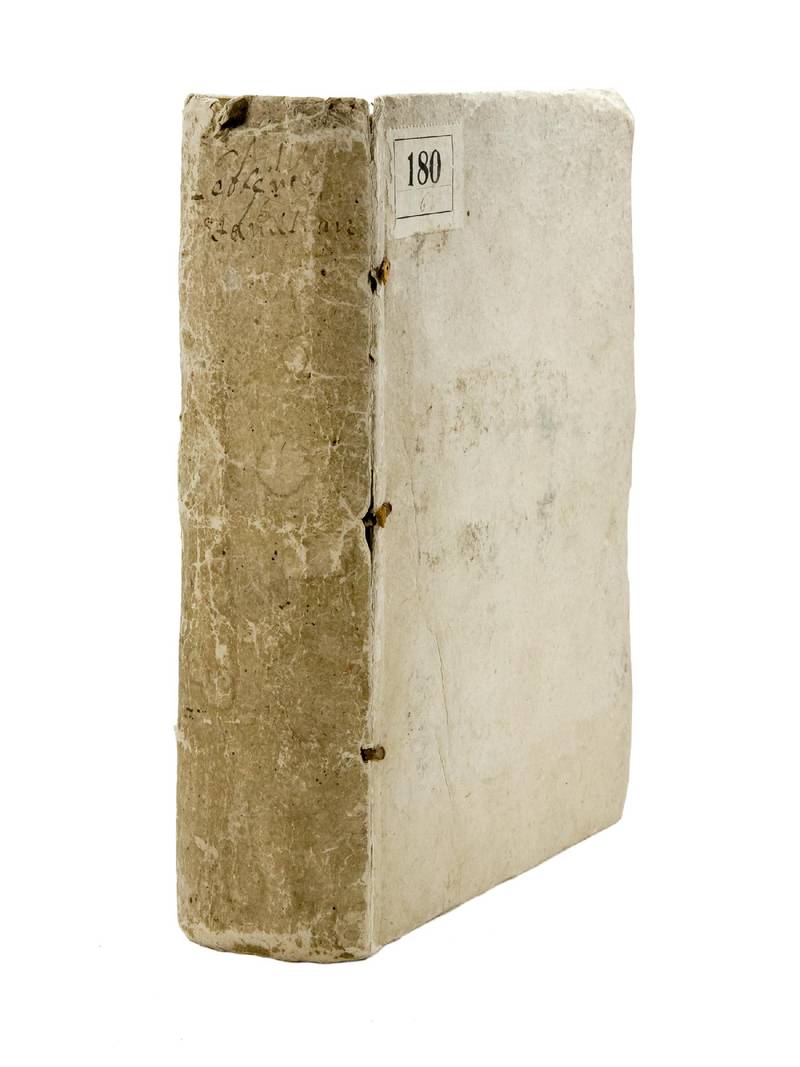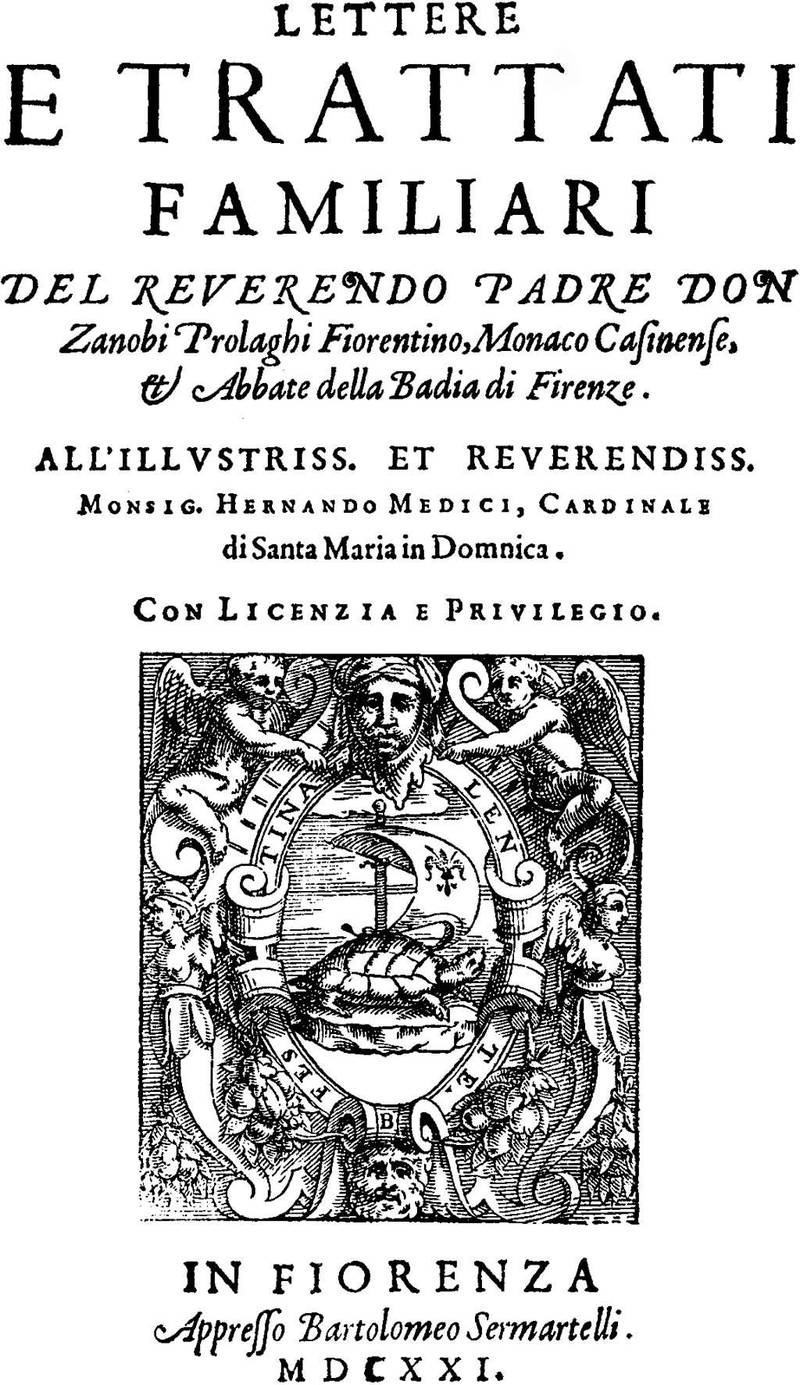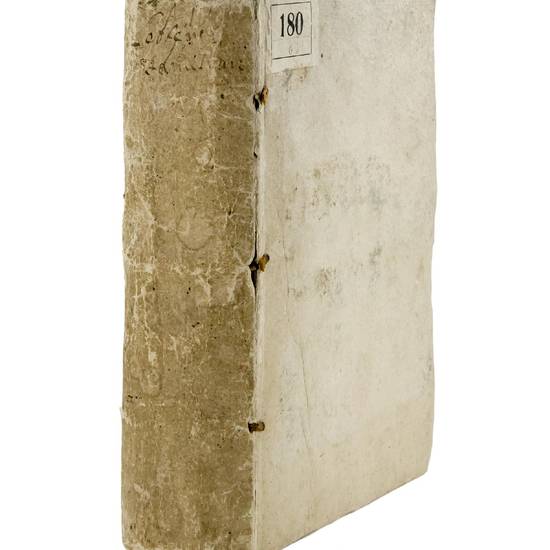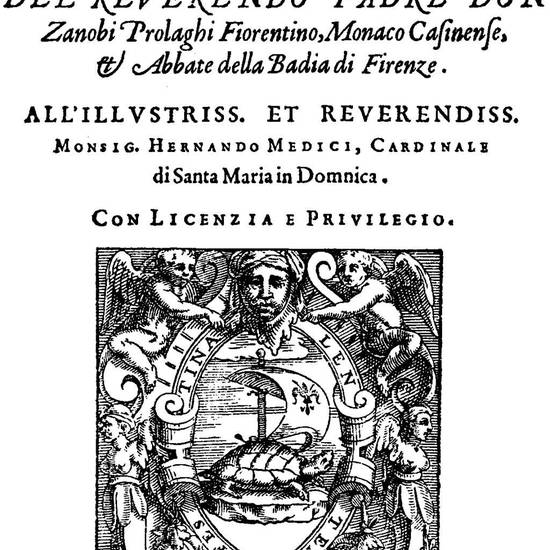4to. (40), 591, (1) pp. ∗4, ∗∗-∗∗∗∗∗4, A-Z4, Aa-Zz4, Aaa-Zzz4, Aaaa-Eeee?. With the printer's device on the title-page. Contemporary boards.
Adams, P-2158; Basso, p. 258; Edit 16, CNCE28655; Quondam, p. 309; G. Zarri, ed., Donna, disciplina, creanza cristiana dal XV al XVII secolo. Studi e testi a stampa, Roma, 1996, no. 2104.
FIRST EDITION, dedicated to Cardinal Ferdinando de' Medici (Florence, February 20, 1570), of this collection of religious and moral teachings in form of letters, especially addressed to nuns and vidows (cf. A. Erdmann, My Gracious Silence, Luzern, 1999, p. 187). The edition was shared between the printers Sermartelli and Giorgio Marescotti, as the latter's name appears on the title-page of approximately half of the surviving copies (cf. G. Guarducci, Annali dei Marescotti tipografi editori di Firenze (1563-1613), Firenze, 2001, no. 13).
The work consists of several tracts and thoughts on the management of a perfect Christian life, e.g. the respect for authority, the correct interpretation of the Scriptures, and so on, and it is full of examples drawn from Prolaghi's own experience. At the end of the volume are printed four letters by Prolaghi.
“L'indigesta raccolta di Zanobi Prolaghi (1571) sancisce la definitiva trasformazione della lettera in trattato di propaganda del riformismo cattolico, certo in gran parte responsabile di questa radicale riduzione dell'epistolografia a precettistica” (G. Da Pozzo, Storia letteraria d'Italia. Il Cinquecento, Padova, 2007, II, p. 1234).
Zorzi, Andrea. San Faustino Maggiore in Brescia, August 5, 1563 (p. 571)
Dottor Bresciano (to a doctor from Brescia) (p. 577)
Gondi, Francesco Maria. San Faustino Maggiore in Brescia, August 22, 1564 (p. 584)
A un certo suo amico (to a friend). San Faustino Maggiore in Brescia (p. 590)
Zanobio Prolaghi, a Benedectine monk from Florence, was abbot of the monastery of Santa Maria in Florence, also known as Badia Fiorentina (cf. G. Negri, Scrittori fiorentini, Ferrara, 1722, p. 536; and M. Armellini, Bibliotheca Benedectino-Casinensis, Assisi, 1731, II, p. 36).
[9098]





